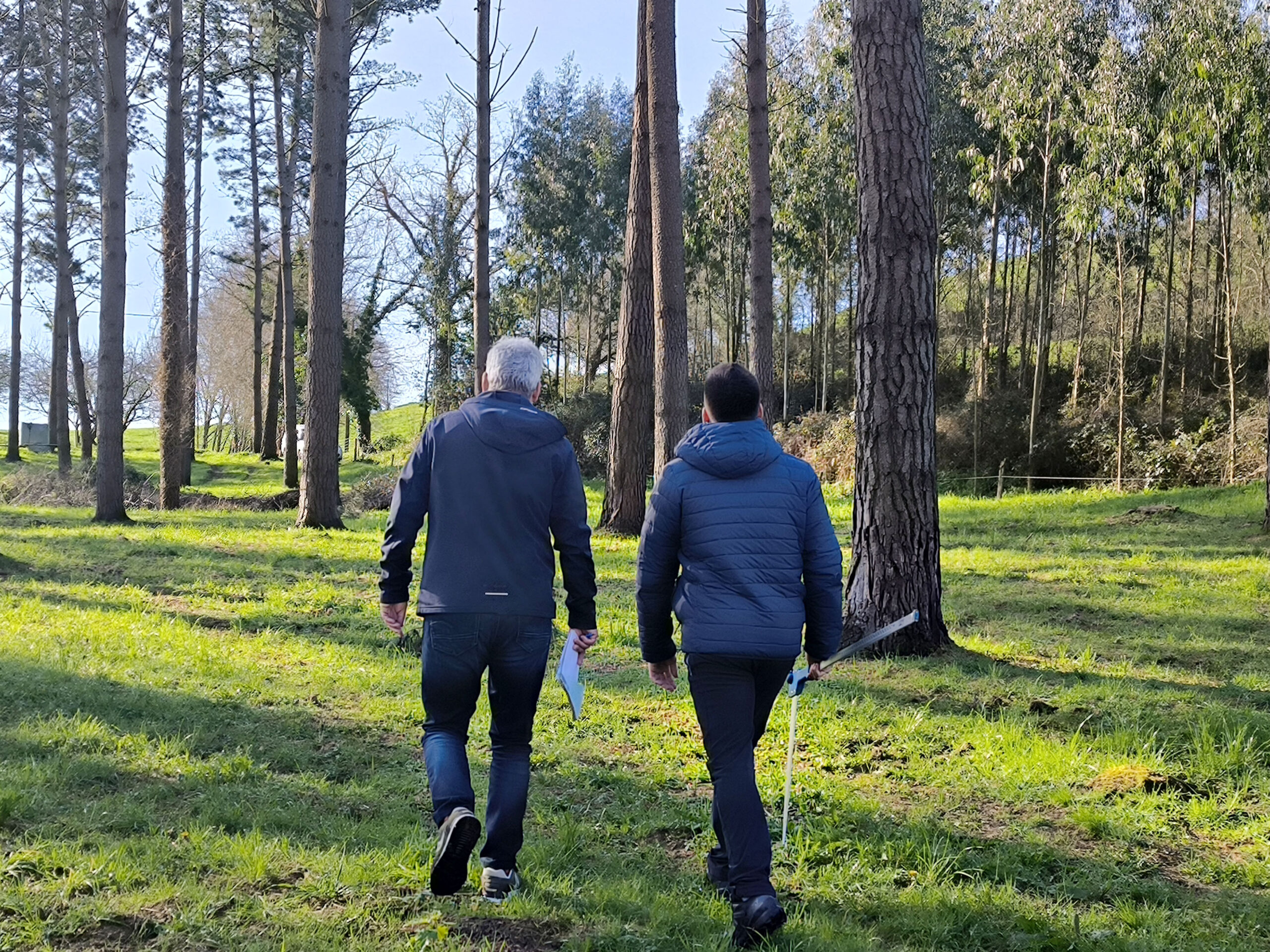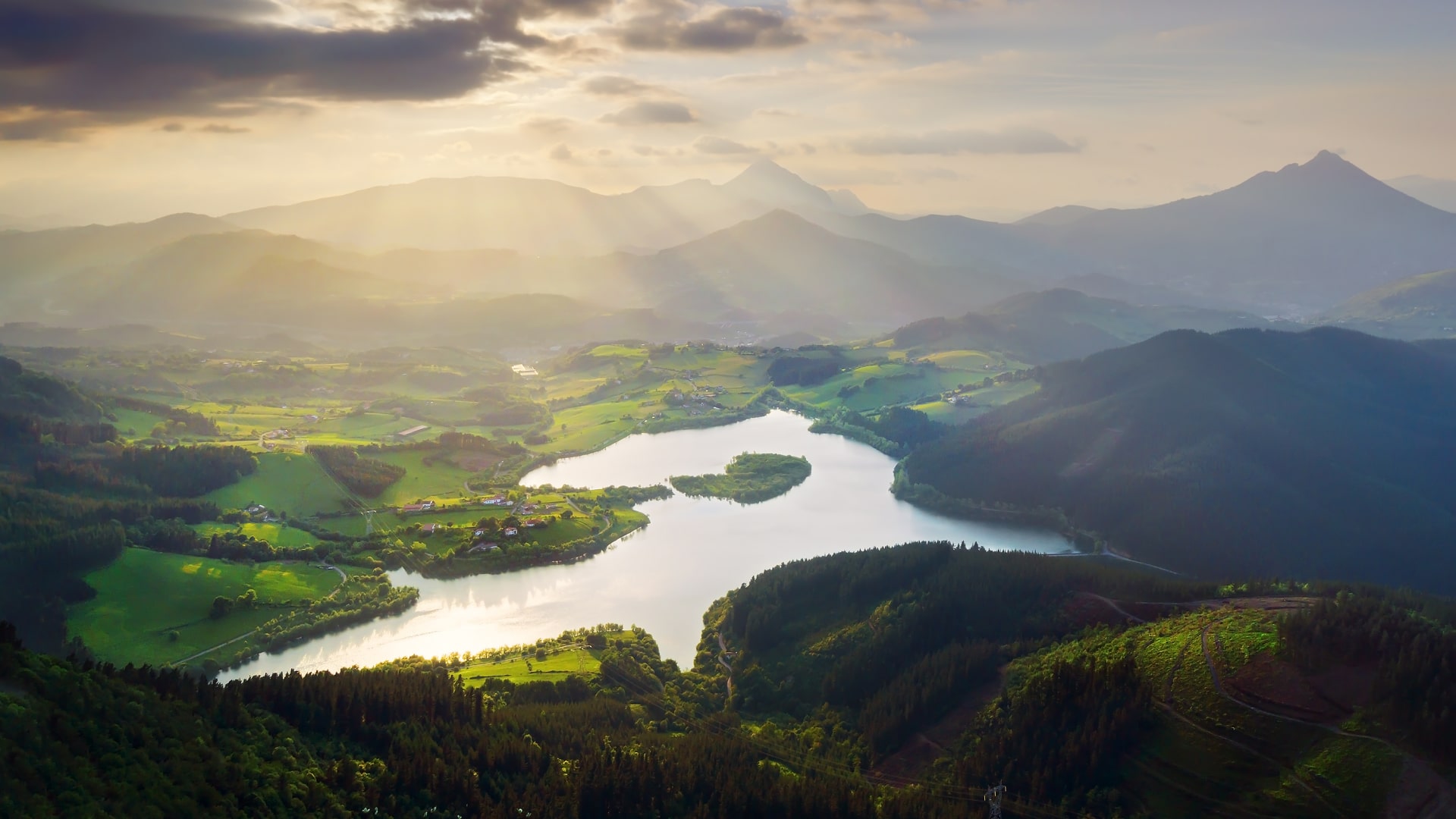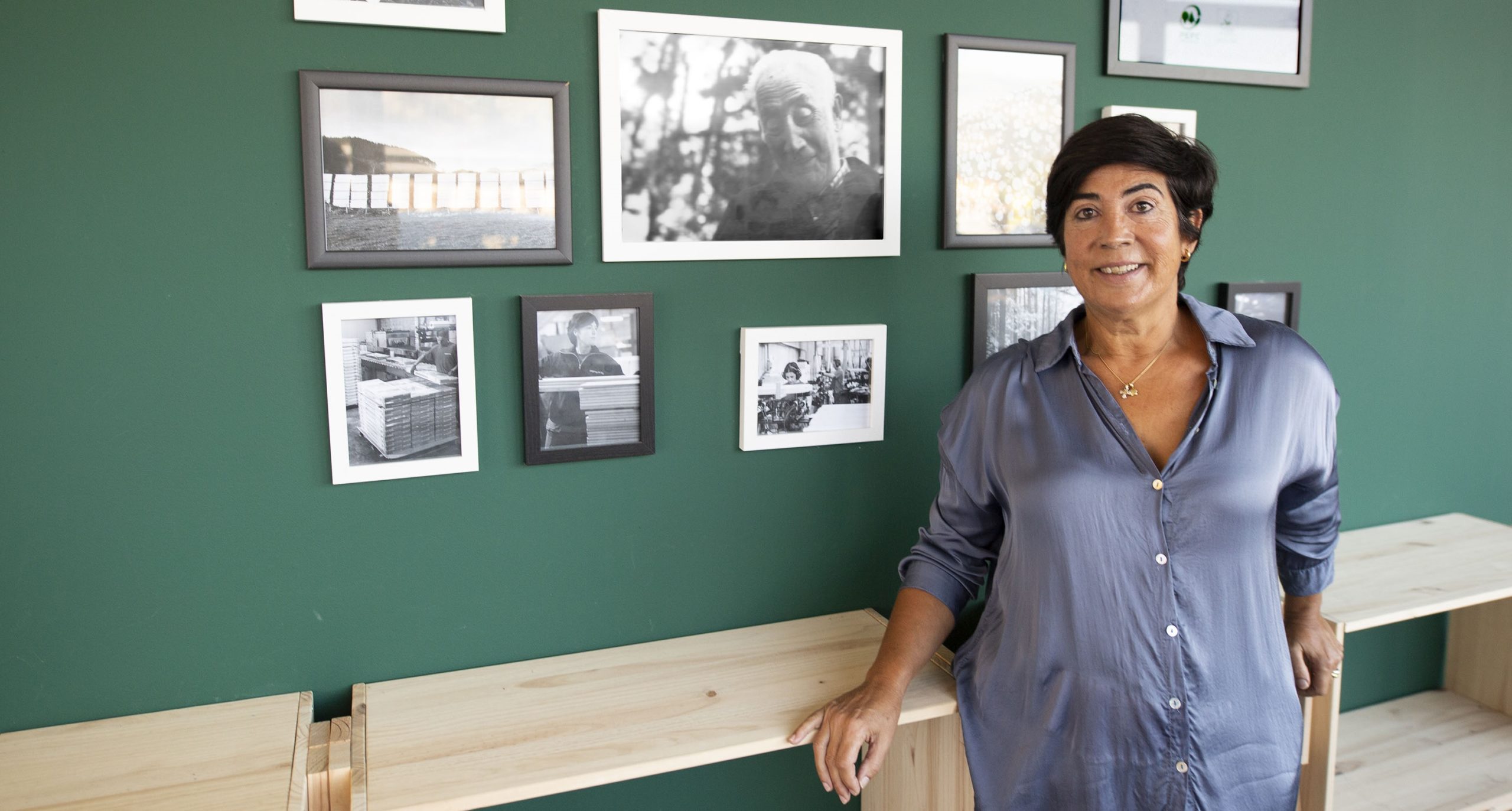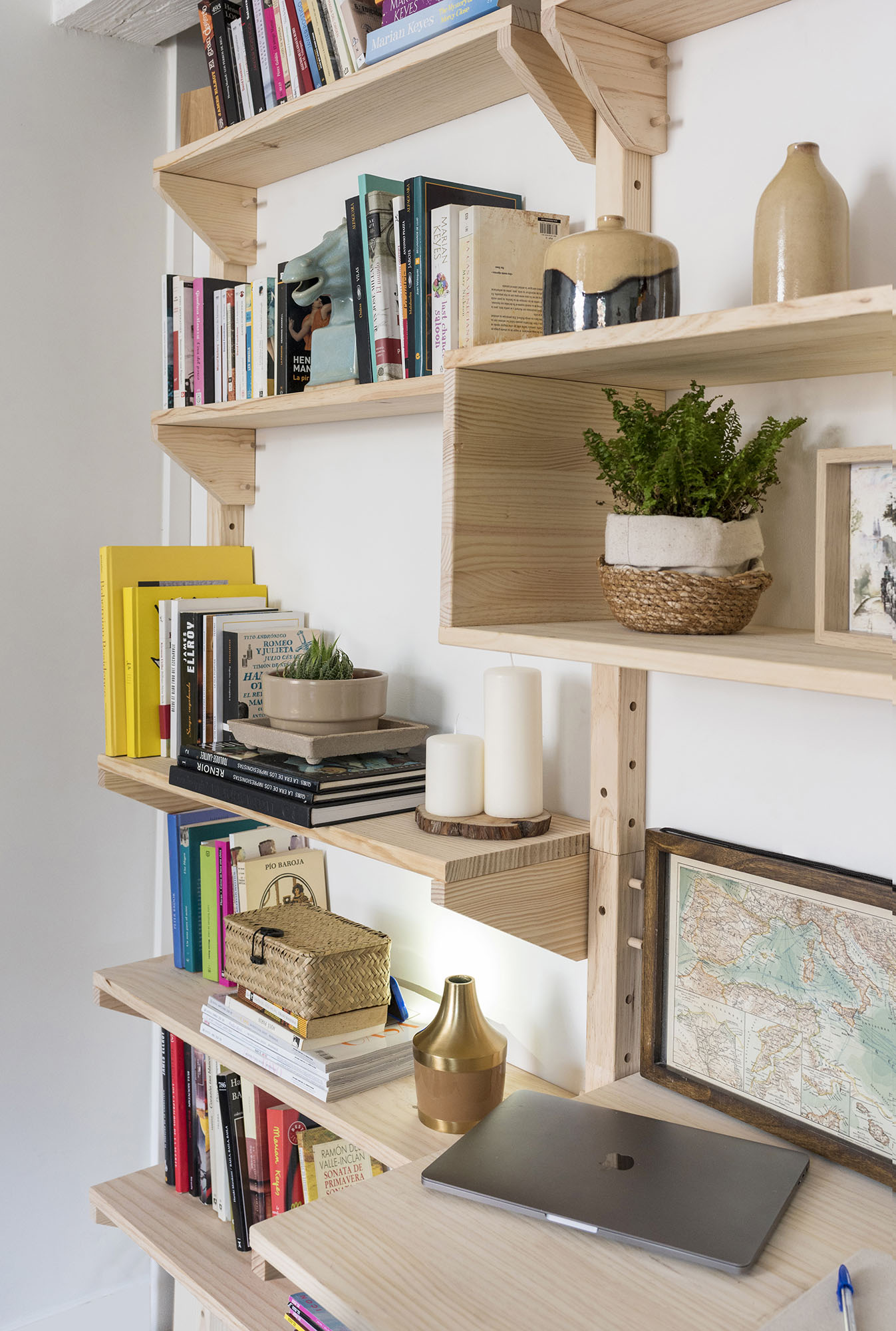“I would have loved to have been in the woods with my grandfather, it would have been nice if the three generations could have shared the trade at the same time!” exclaims Joanes Subinas Astigarraga, with a touch of nostalgia. Through his words, the lost chance of having been able to experience the job of forest manager with his grandfather, Juan Jose Astigarraga, co-founder of Astigarraga Kit Line, a company that has woven its life among the forests, is intertwined. It was not possible, but he has the best teacher at his side: the director of the company’s forestry section, Jose Juan Astigarraga, son of Juan Jose and uncle of Joanes.
Joanes is 26 years old and is in charge of the forestry section. With a degree in Business Administration and Management, he could be in an office crunching numbers, which is also because he is in charge of contracts with the forest owners or managing the sawmill’s stock, but his thing is the mountains. Outside and inside the workplace. His profession and his hobby: on a motorbike, climbing a mountain, sliding down the snow or visiting a pine forest. Joanes beats to the rhythm of the mountains. On the forests. “I love the first sector”, he clarifies.
Jose Juan, director of the forestry section, has been in the company for 36 years, between purchasing and production. In the early days, in a tiny workshop in Landeta making trestles; then in Urrestilla, with wooden shelving and bottle racks. With the turn of the century, everything grew: they ended up with the current plant and more trestles and new furniture were born. About fifteen years ago, without leaving the purchasing section, although he did leave the production section in favour of the implementation of new machinery and facilities, he gradually began with his father “to learn about the forestry section”.
And what is the forestry section?
“The forest owners call us and tell us what types of pine forests they have. If we see that they are of interest to us, we go to look at them. Once on the ground, you study whether it is appropriate for Astigarraga Kit Line. From there, the negotiation and whether to buy or not begins. When you acquire the pine forest, it is prepared for timber extraction. This is where our forestry crews or teams intervene. We tell them what product each pine forest is for. Depending on the size we provide them with, as a basis for making shelves or trestles, the pine is felled and the wood is extracted”, explains Jose Juan. “Our work ends by adapting the tracks and leaving them as good as possible. This is where the owner’s work begins. At Astigarraga Kit Line we always encourage reforestation and we inform you about grants and subsidies. Except for some land that is used as pasture for cattle, the rest is reforested”, adds Joanes.
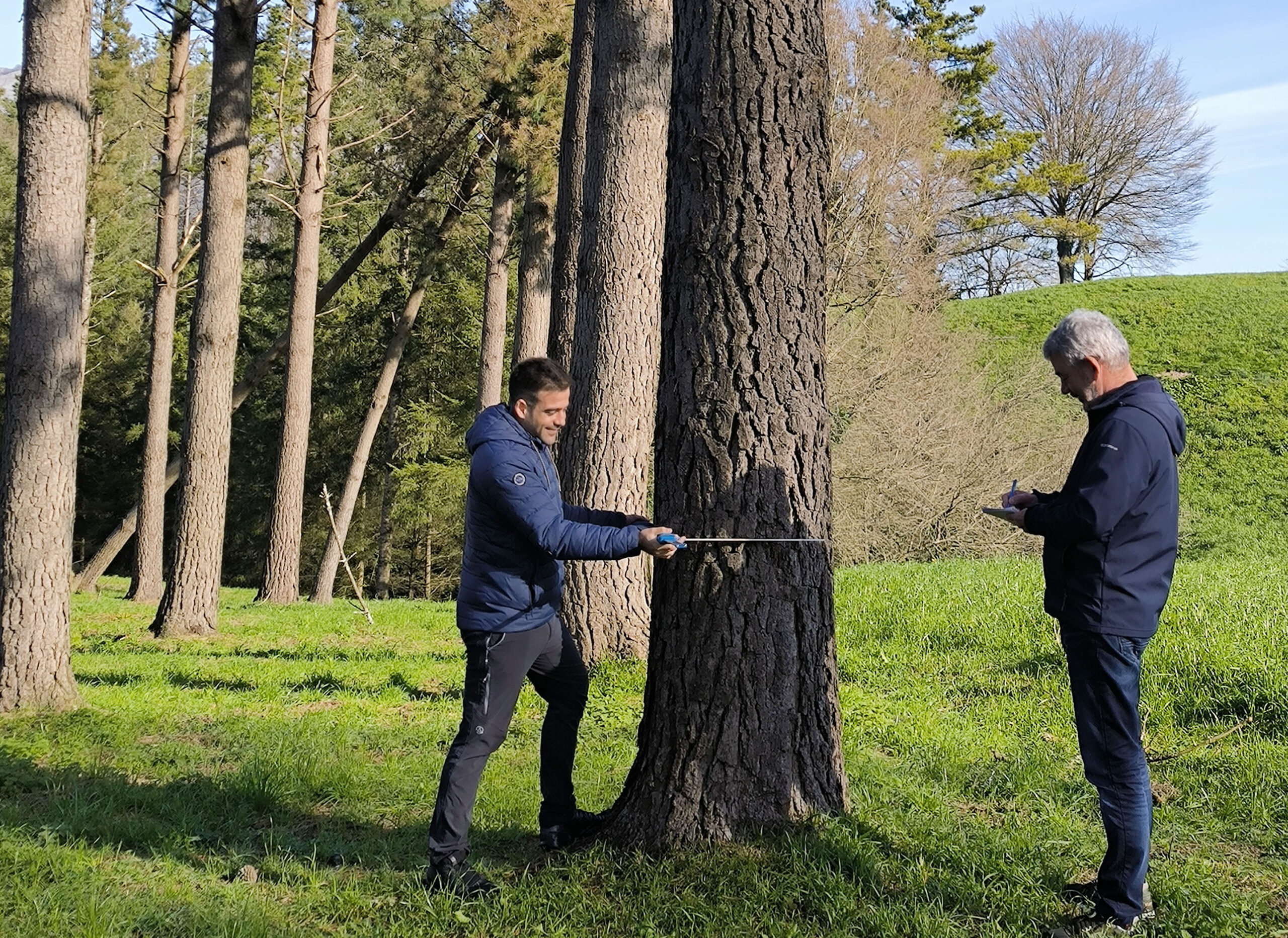
Sustainability and passion for nature
Dedicated to the manufacture of solid Insignis pine wood furniture, the essence of Astigarraga Kit Line is intertwined with sustainability, reforestation and love for nature. Jose Juan carries the forests inside him: “In our house we have felt the forests. Wood has been at the centre of many conversations”. “Everything I know was taught to me by my father and his great friend Joaquín Egaña, from the Egurbide farmhouse. They were my teachers”, he adds. When Juan Jose and Jose Juan could not agree, the older one settled the matter quickly: “Do what you want”. “Lefty”, as our co-founder was known, and Egaña could almost read the shadows of the trees and could tell from afar whether a pine forest was good or not. And life, which often seems cyclical, repeats itself. Because now Joanes dedicates almost the same words to his uncle: “Everything I know, I know thanks to Jose Juan”.
Joanes was given the opportunity to start in forestry section two years ago. “I didn’t think twice about it! I am still learning, because this is a trade that you never stop learning. Jose Juan is teaching me and passing on everything he learned from my grandfather”, acknowledges Joanes, who repeats more than once that, after “a whole life together” – grandfather and grandson lived under the same roof –, “it would have been very nice to have three generations together”. Yes, indeed. Although he carries with him the legacy of his passion for the forests and the love for that wood with which Juan Jose, first, and Jose Juan, later, began to design trestles, as well.
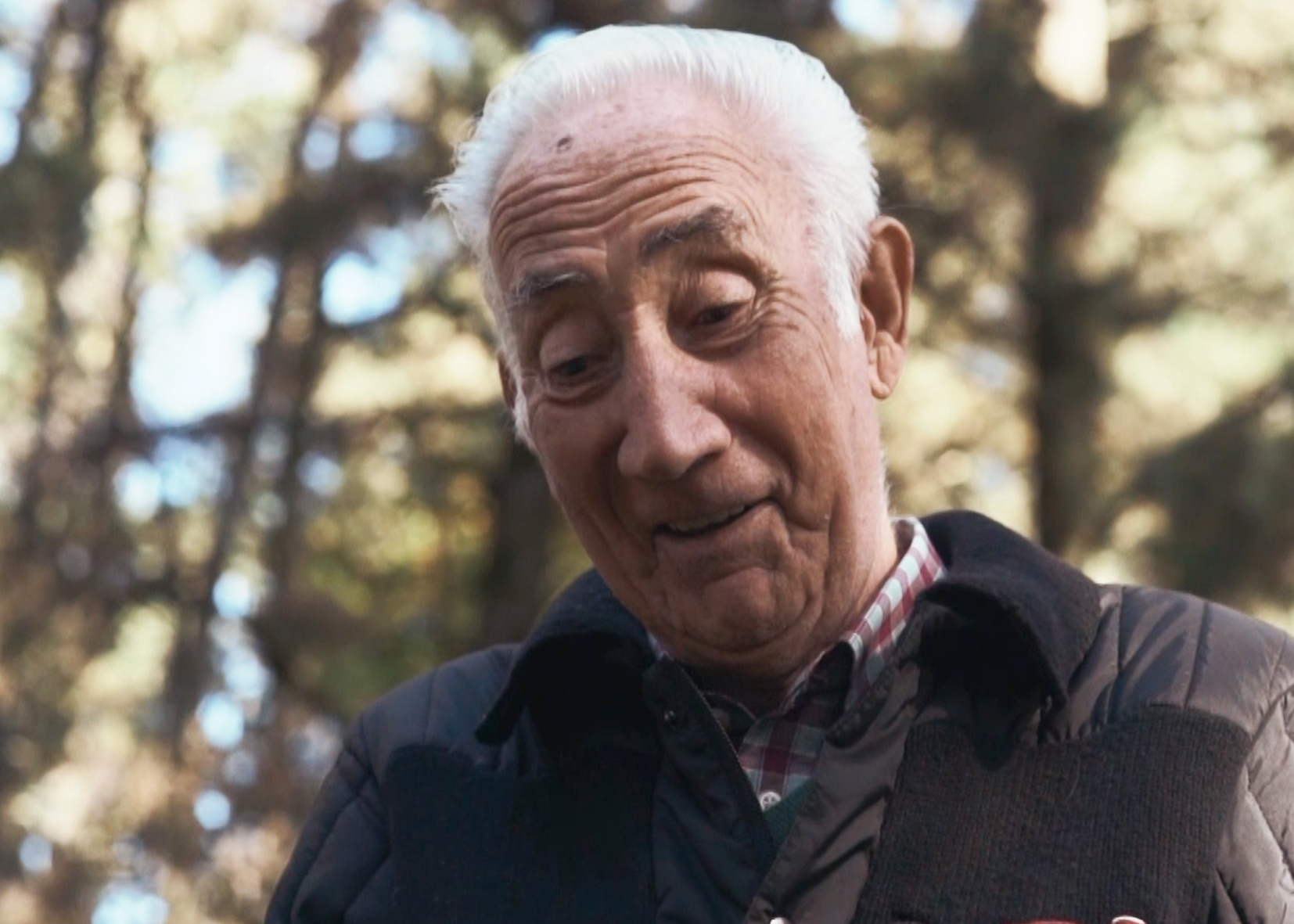
Jose Juan demonstrates a deep commitment to environmental protection, as does the entire company. For us, forests are much more than a source of raw materials, they are the very essence of our inspiration and responsibility for sustainability. “We take care of the forests through very selective pruning. When the pines are 40 to 50 years old, they are felled, before they die, dry out or start to suffer from diseases”.
The signals that the pine forest sends out
Joanes, who is taking the appraiser’s course to be able to certify the measurements of the pine forests, is an expert in locating the signals that the tree sends when it is alive or dying. “In terms of quality, young pine is the one with the highest quality, but you have to check if it is infected by the ‘brown band’ disease. In mature pine trees, you have to make sure that they are not very branchy and that they do not have black knots. If the branches are rotten, it means that, when the boards are removed from the trunks, the knots created by these branches will be black. At 55 or 60 years of age, it is likely to be rotten inside. If we find fungus on the trunk, it could be a symptom that it is already dry. On the other hand, if there are green branches at the base, it means that the pine tree is alive inside”, Joanes explains with ease.
“The cracks in the bark are another sign, if they are red it means that the pine still has the strength to grow and if they are black it means that the pine has stagnated. The issue of the tracks is also very important, you have to know how to differentiate what type of soil there is, whether it is a mud track or a stone track”, he concludes.
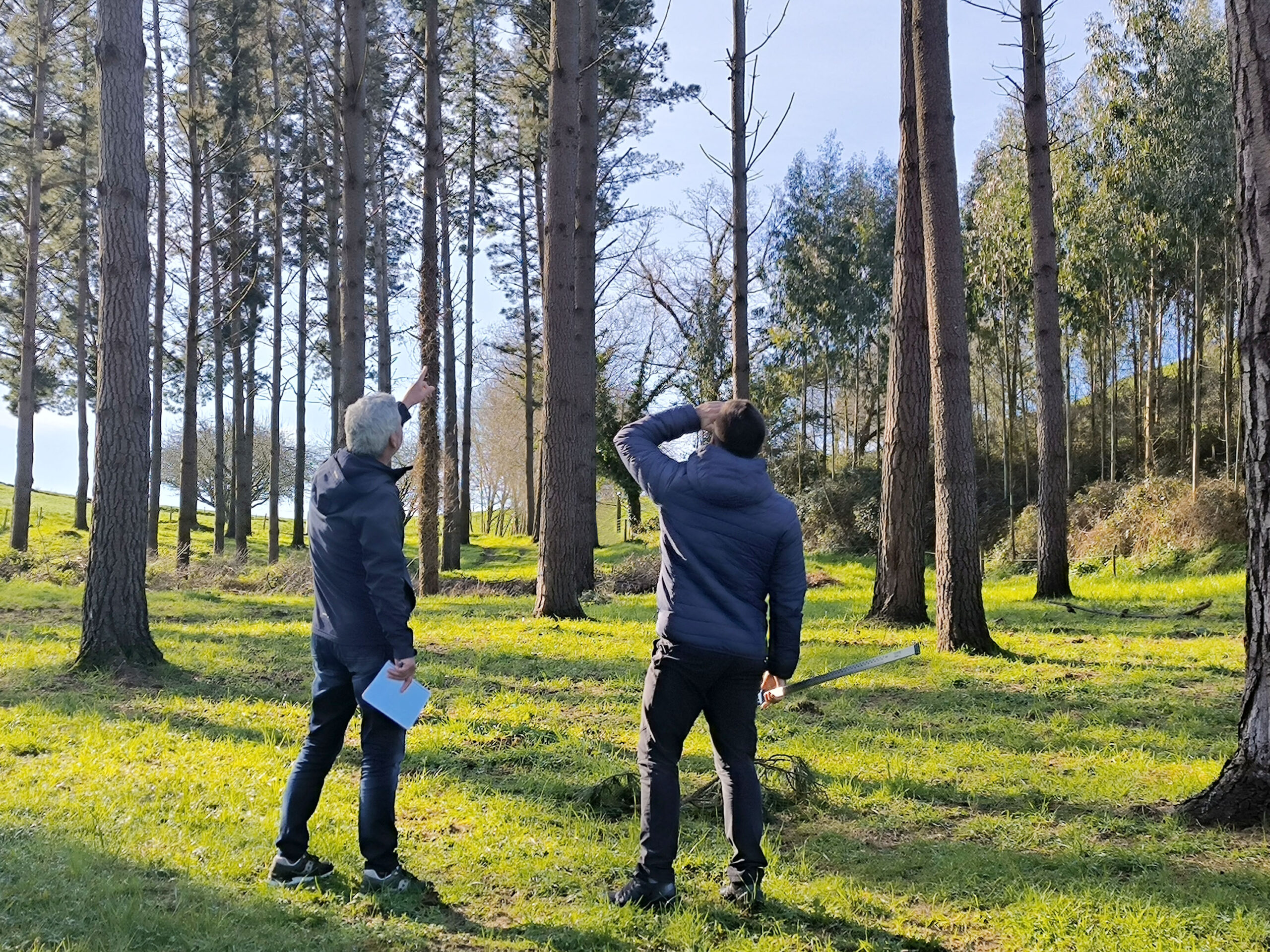
“Little more analysis that can be done about a pine forest. I couldn’t have said it better myself. You said it perfectly”, says Jose Juan comfortingly to Joanes, proud to see his nephew taking the reins with such aplomb and confidence, because the day-to-day forestry management is already in the hands of Joanes, of whom he says he has “people skills and knows how to relate very well”. Well, Jose Juan sneaks in one more point: “It is important to note the altitude at which the pine forest is located. If it is above 400 metres, the pine trees grow more slowly, are very short and have very large branches. It’s not exact, but ideally it should be from 300 or 400 metres downwards”.
“The profession of forest manager is not understood”
Jose Juan’s passion for his work is evident in every word he says: “I love going to the mountains, being with the owner and negotiating, this job is beautiful. What I like least is the management with the Administration, which is becoming increasingly complicated”. From time to time, he also flares up, because not everything is as he would like it to be. “Some people understand that when you cut down a pine tree, you replant and reforest. But, in general, the job of forest manager is not understood. It seems that to be a forester is to cut down a tree and that’s it. And that is not the case”.
Since 2005 Astigarraga Kit line has been PEFC certified, which guarantees that the wood is extracted from responsibly managed forests, ensuring traceability in all the links of the supply chain. “We were almost pioneers in Spain. Nearly 20 years ago, we were the ones who were most responsible for getting landowners to certify their forests. It was a handicap when it came to acquiring a pine forest. We always asked for the PEFC certificate and others did not”. Since 2019, Astigarraga Kit Line has also had the Ecolabel identification granted by the European Union, which certifies that we contribute to a sustainable economy by reducing our environmental impact.
“Plant, plant and plant”
And no, you don’t just cut down a pine tree and that’s it. Astigarraga Kit Line promotes sustainable forestry management, a management that seeks to care for the life cycle of forests where, when one tree is removed, space is left for another to grow. That is why the verb that Jose Juan repeats most often is to plant, and three times as often: “Plant, plant and plant. Plant whatever you want, beech, oak, holm oak or pine, but plant”.“Reforestation is a personal commitment”, he says. And he deeply feels this “moral responsibility” to protect and care for the forests for those who come after him.
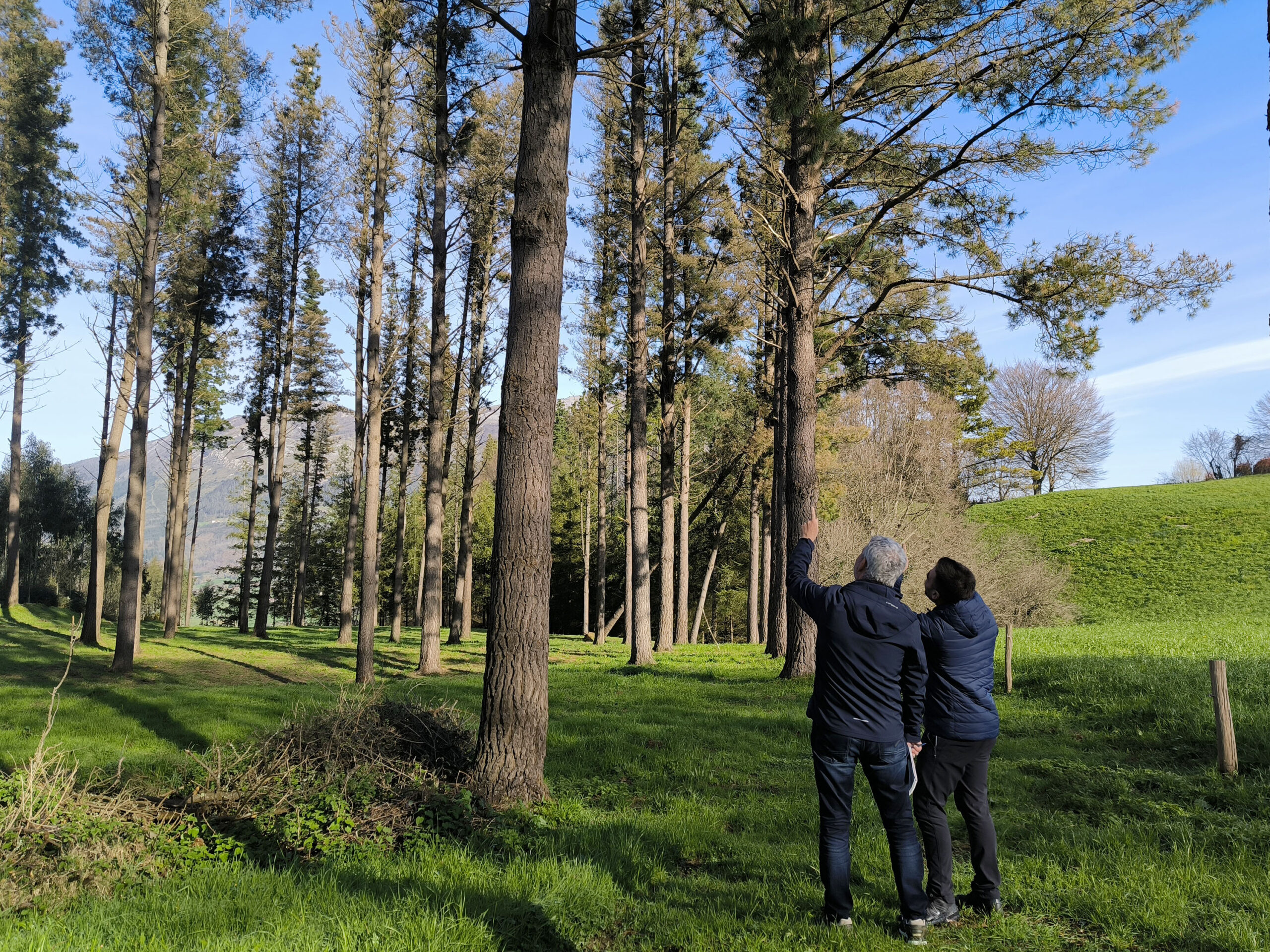
More empathy for foresters
Joanes supports Jose Juan’s speech and believes that “more understanding and respect for loggers” is needed. “In recent years, uncontrolled and unsustainable logging in Africa and the Amazon has done a lot of damage. And people think it’s the same here. It is very nice to walk through a beech forest that is 150 years old, but if you don’t prune a pine forest after 60 years it starts to rot. What is better: a rotten forest or a forest that is cut down and reforested again?” he asks.
José Juan requires the same towards foresters: “Empathy”. “The 12,000 landowners in the Basque Country are the ones who are really planting and afforesting the forests in the Basque Country”, he says. The director of the forestry section regrets that in Gipuzkoa, the province with the largest area of trees in Spain (61%), 16% have not been planted in the last five years, according to data from the Gipuzkoa Association of Foresters.
Environmental education
Jose Juan advocates forest management in which all parties are involved: landowners, environmentalists, timber factories (paper mills, sawmills, furniture manufacturers…) and the administration. “All hand in hand”, he hopes. Because the goal, he says, is to “leave a green world”. It also supports environmental education, which should start in schools. “I didn’t learn it in school but two years ago. People have no information about our work. It is not throwing out and not planting. It is not possible to identify when a pine forest has been felled and then planted. People think that everything is deforested and don’t notice that new trees have been planted”, Joanes continues.
The effort and work of their father and grandfather was not in vain, the hours and hours loading the logs by hand did not fall on deaf ears. Jose Juan recalls the honesty that characterised him, the confidence he transmitted and the credibility he enjoyed. “My father was happy in life with his children, although he didn’t tell you that, he was Basque. But my mother does convey it to us, and what’s more, she often tells us how happy he would be to see the third generation follow in his footsteps”. In addition to Joanes, there are two other grandchildren of our co-founder: Karmele Martínez de Cabredo and Djuniet Astigarraga, responsible for operations and e-commerce, respectively.
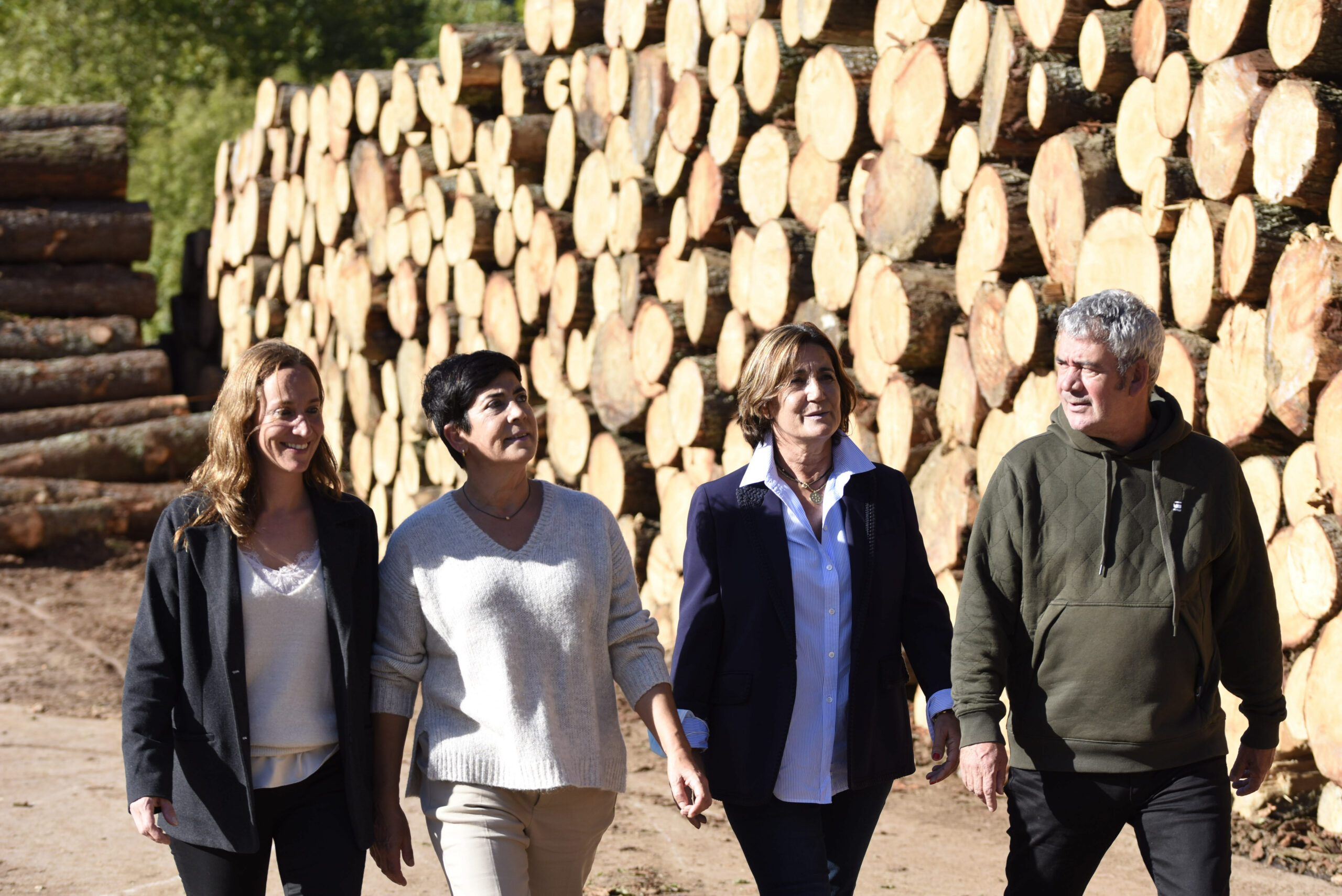
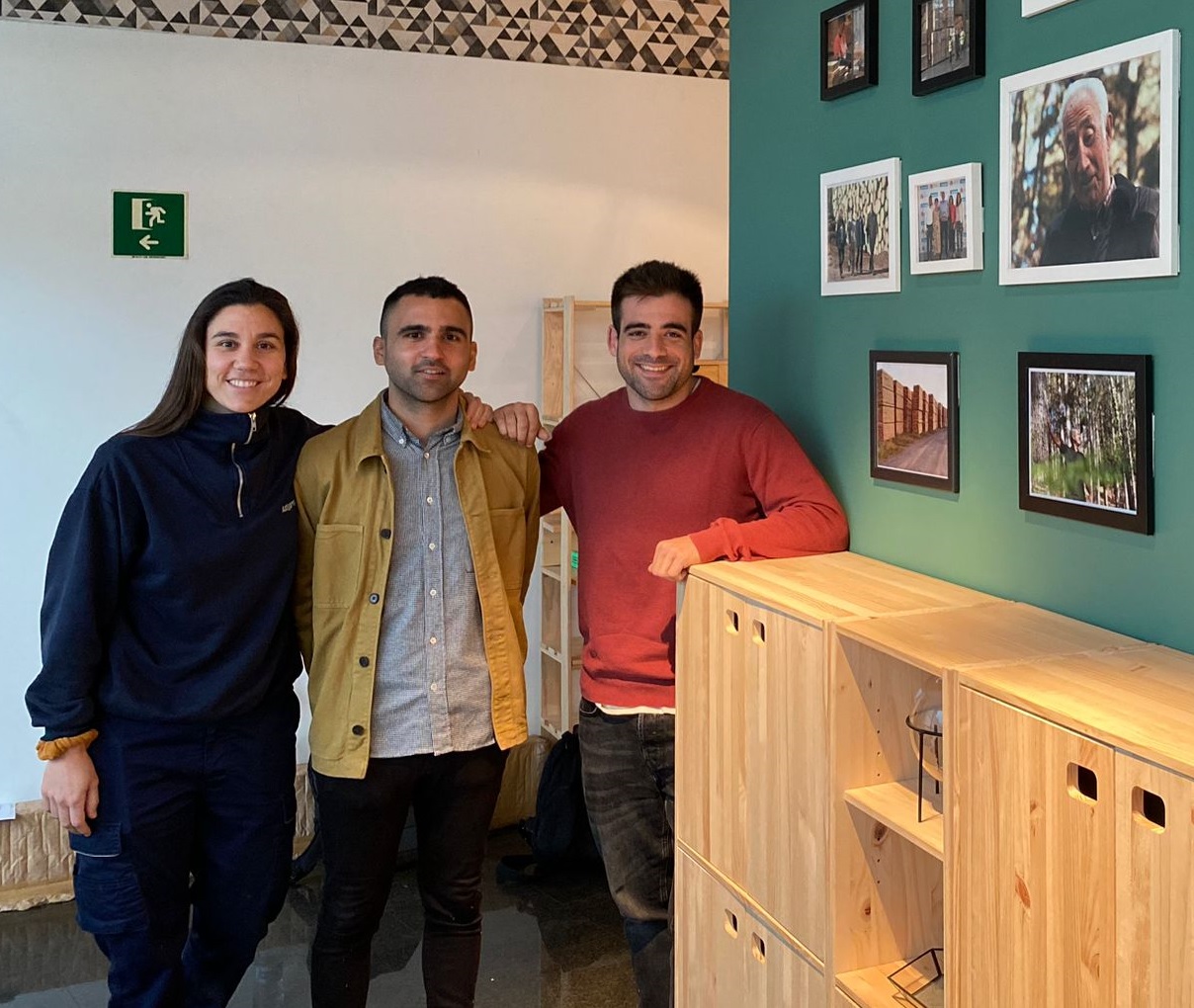
Each tree, each pine forest, each forest is an echo of the voices of those who came before, of Juan Jose Astigarraga, Joaquín Egaña and many others; they are an invitation to carry on with what they started. May the work of Jose Juan and Joanes remind us that the legacy of their father and grandfather, respectively, not only lives on in the past, but also flourishes in the present and is projected into the future. Even though the three generations have not been able to coincide in the woods walking through the pine forests, there is still that responsibility that hovers over Astigarraga Kit Line to care for and protect the most precious treasure they have bequeathed us: our forests.
